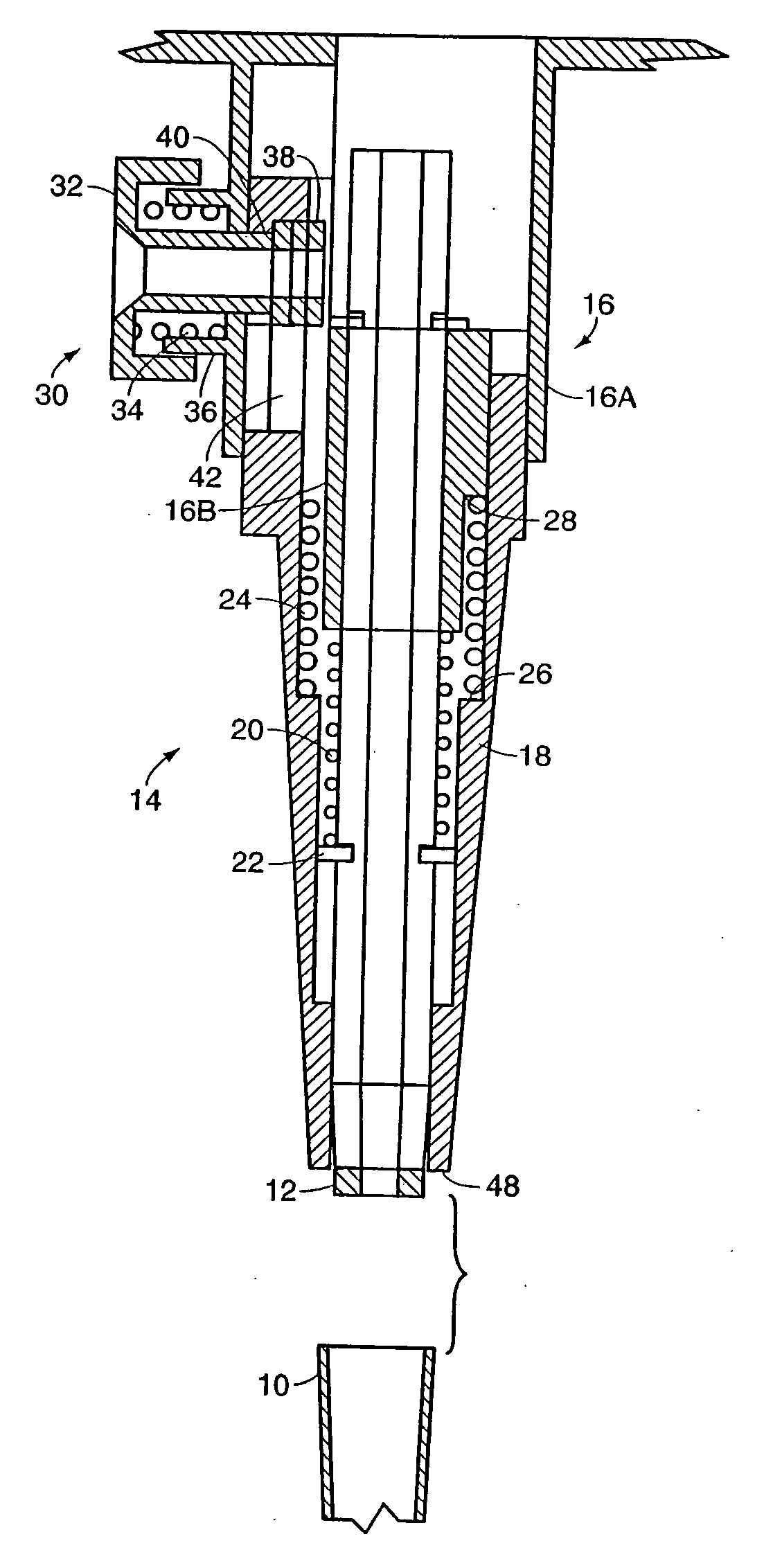Automatic pipette identification and detipping
a technology of automatic identification and pipette, applied in the field of pipettes, can solve the problems of preventing accurate fluid aspiration and dispensing, difficult to remove all contaminants, and expensive and time-consuming tip washing, and achieve the effects of facilitating the removal of the tip
- Summary
- Abstract
- Description
- Claims
- Application Information
AI Technical Summary
Benefits of technology
Problems solved by technology
Method used
Image
Examples
Embodiment Construction
[0021] Referring to FIGS. 1A-1C, a first embodiment of the invention is shown wherein a tip 10 is mounted to a nozzle 12 which is part of a nozzle assembly 14. Assembly 14 includes a housing 16 having an outer sleeve 16A and an inner sleeve 16B. An ejector sleeve 18 surrounds nozzle 12, extending to a point near the distal end of the nozzle to which tip 10 is mounted, and fits at its proximal end between sleeves 16A and 16B of housing 16. Nozzle 12 is spring biased to the released position shown in FIG. 1A by a compression spring 20 extending between ring 22 fixed to nozzle 12 and the end of housing sleeve 16B. Ejector sleeve 18 is also spring biased to the released position of FIG. 1A by a compression spring 24 extending between an interior shoulder 26 of sleeve 18 and a shoulder 28 on inner housing sleeve 16B. In order for nozzle 12 to be movable as discussed herein, a flexible connection, for example a flexible hose, should be provided connecting the nozzle to its drive piston or...
PUM
| Property | Measurement | Unit |
|---|---|---|
| force | aaaaa | aaaaa |
| distance | aaaaa | aaaaa |
| movement | aaaaa | aaaaa |
Abstract
Description
Claims
Application Information
 Login to View More
Login to View More - R&D
- Intellectual Property
- Life Sciences
- Materials
- Tech Scout
- Unparalleled Data Quality
- Higher Quality Content
- 60% Fewer Hallucinations
Browse by: Latest US Patents, China's latest patents, Technical Efficacy Thesaurus, Application Domain, Technology Topic, Popular Technical Reports.
© 2025 PatSnap. All rights reserved.Legal|Privacy policy|Modern Slavery Act Transparency Statement|Sitemap|About US| Contact US: help@patsnap.com



